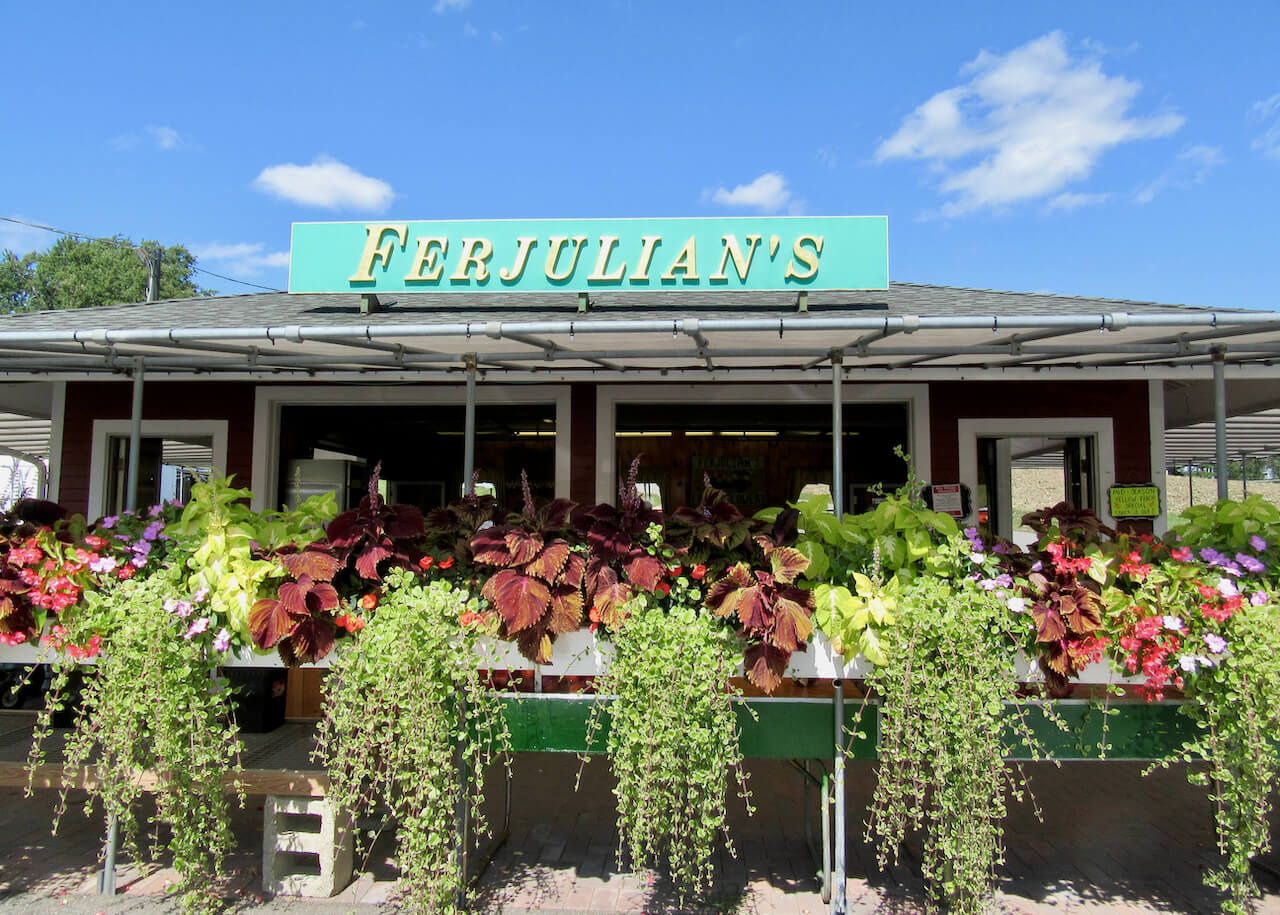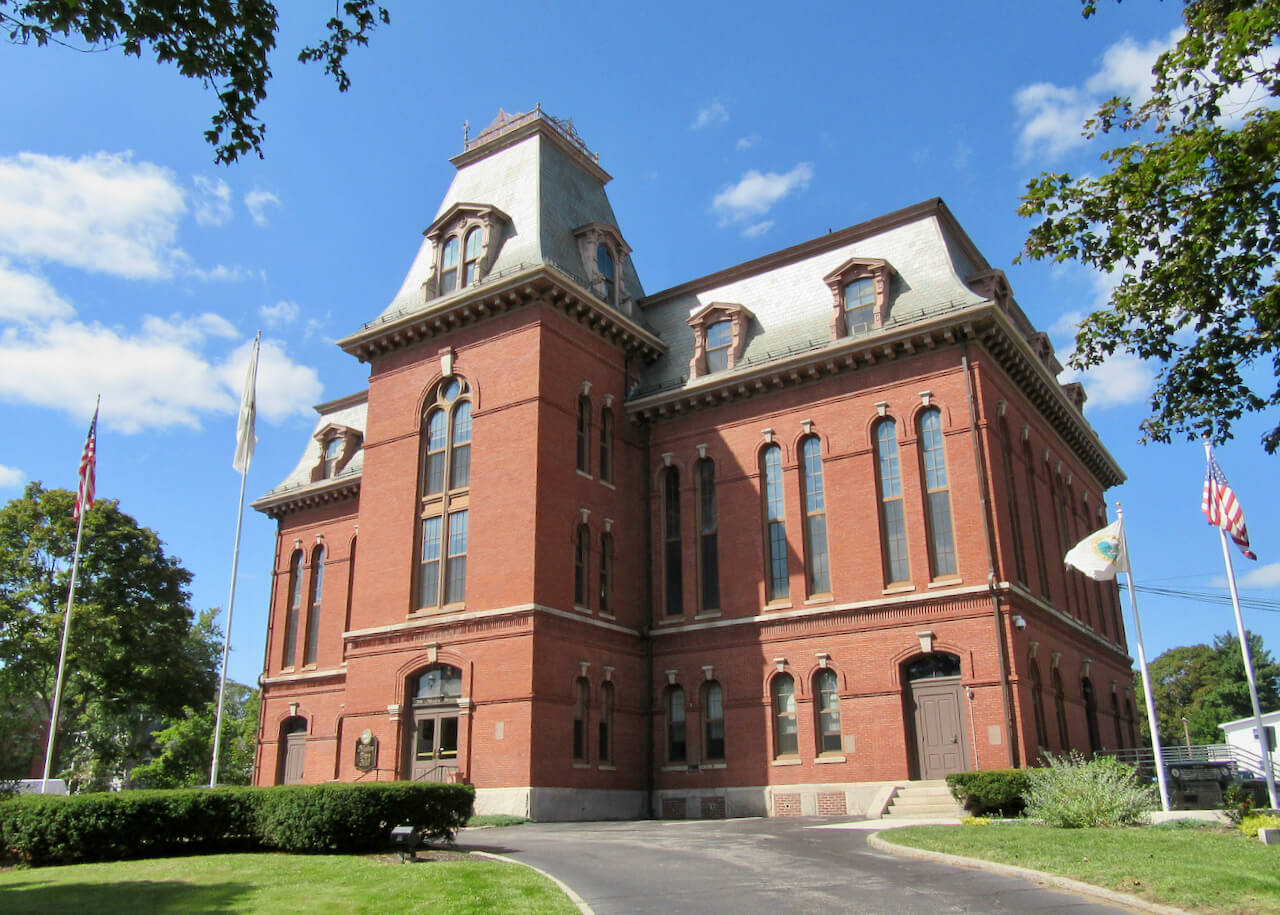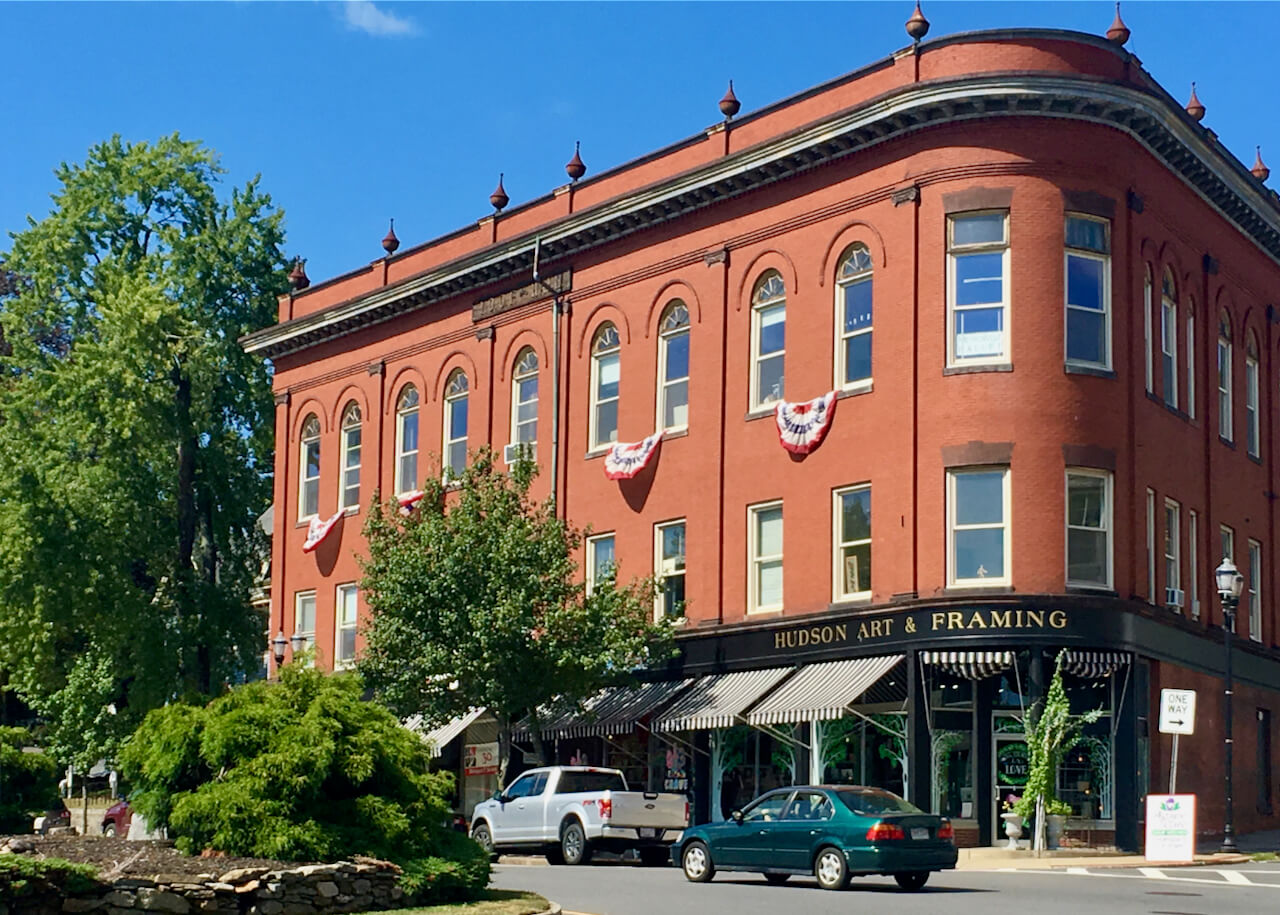The land that would become Hudson was once part of the Okommakamesit Plantation Praying Indian Village established by John Eliot in the mid-17th century. After European colonists forcibly removed the Praying Indians from their plantation during King Philip’s War, imprisoning and killing most of them, many of the survivors did not return to the area.
Known as Feltonville, a village of Marlborough, until its incorporation in 1866, Hudson’s proximity to the Assabet River supported a vibrant shoe industry, which attracted immigrant workers from Ireland and Canada. It was named for Charles Hudson, who donated $500 to build the town library.
An 1894 fire destroyed much of the downtown area, which was later rebuilt. It offers many fine examples of Colonial, Federal, Romanesque Revival and Victorian architecture, and is protected by the Silas Felton District Commission.
Hudson’s strong abolitionist movement is represented by several local homes that served as stations in the Underground Railroad.




